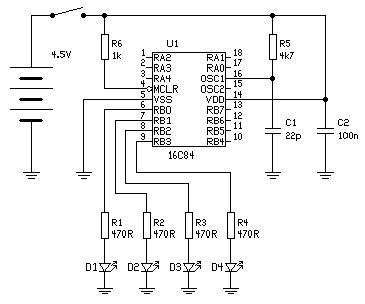Tait Serial Programmer Schematic
I like to use Tait Serial Programmer (Name in IC-prog) with Winpic800, because I need to program some PIC which is not support by IC-prog. Pic Programmer Schematic. Serial Port ICSP. Is a variation of David Tait's classic design. It is very reliable and there is.
Make your own PIC programmer for your computer's parallel port. This is a variation of David Tait's classic design. It is very reliable and there is good programming software available for free. I like IC-Prog and PICpgm programmer. Best of all, it uses just two voltage regulator and 5 transistors!

*** I added a pic of the final result, and pics of my new mini-programmer with a clear top. Click the smaller images below! Pro Lite Serial Protocol on this page. ** This is a new variation and it didn't work 100% correctly on the first attempt. I guess I got ahead of myself. I have built several variations, and I thought I was on top of things.:) There are a couple of changes, but everything worked out in the end.
I had to add an additional npn transistor and change a couple of resistor values. These changes are already reflected in this list, but are not updated in all the pics. See step 7 for pics of the software I use and how to set up the programmer. You need: A male DB25 socket 4x NPN transistors, such as the 2n3904 1x PNP transistor, such as the 2n3906 1x 7805 voltage regulator 1x LM317 voltage regulator (and appropriate resistors to make 12.5V) 1x 10k SIP resistor network 4x 10k resistors 1x 22k resistor* update for step 3 1x 5k resistor 1x 1k resistor* update for step 3 1x machined-pin chip socket soldering iron, protoboard, wraping wire, wrapping tool, glue gun.
Make an ICSP port with part of a chip socket, like this. Carefully bend the pins at a right angle. Now glue port down. Now is also a good time to glue your transistors on. You can also solder the emitter of your npn transistors to the ground plane, now. I have labelled each transistors purpose here.
The three npn transistors will be wired as inverters. They will essentially 'take power away' from their respective pullup resistor when a current is placed onto their base pin. The PNP transistor (upside down) will control the programming voltage. It is also going to invert it's signal.
**EDIT: I just realized an omission in this design. There should be one additional npn transistor that is used to drive the PNP transistor. This will buffer your computer port from the voltages at the pnp's base. This will also uninvert the signal. I used 10k base resistors. Research Methods In Anthropology Qualitative And Quantitative Approaches Pdf there. Solder where circled. Universal Sql Editor.